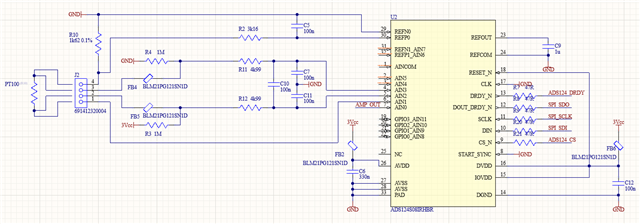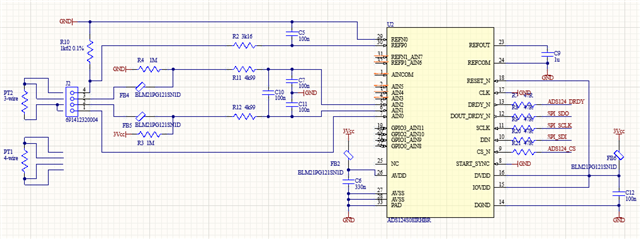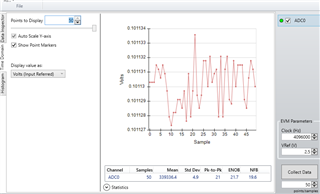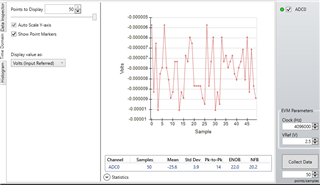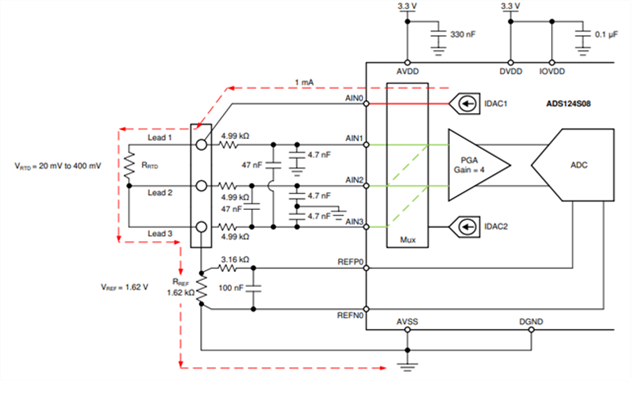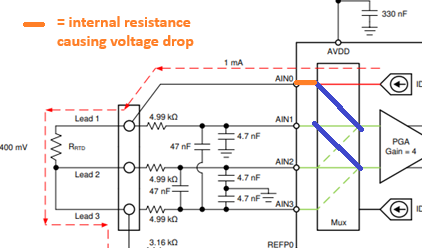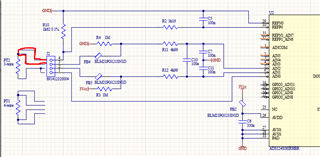Tool/software:
Hello,
we are trying to read a PT100 RTD with three-wire configuration.
Ou circuit is identical to the one shown in the application note https://www.ti.com/lit/an/sbaa334b/sbaa334b.pdf
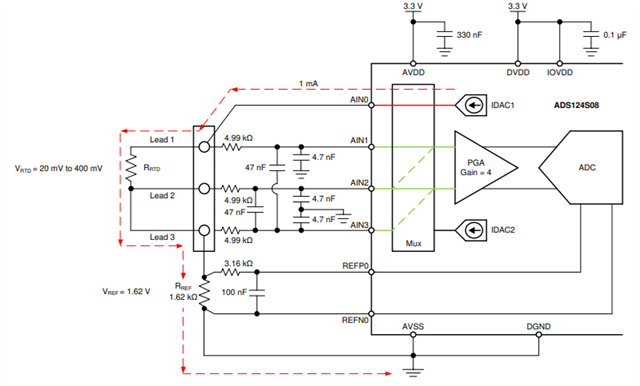
We perform measurment in two stages:
- measurement of RTD resistance by activating IDAC1 (1mA) and reading AIN1-AIN2
- measurement of LEAD resistance (Rlead2+Rlead3) by activating IDAC1 (1mA) and reading AIN2-AIN3
First point (1) gives reasonable output (arount 100Ohms) instead step (2) gives a nonsense result: we aget a voltage drop of about 6mV which corresponds to 6Ohms resistance, which is at least one order of magnitude higher than lead resistance.
Further checks made:
- Lead resistance is REALLY about 0.6Ohms
- Bias current and voltage is correct when read with oscilloscope, despite being very noisy
- By using an external biasing source, the issue disappears and we get correct reading (around 600uV).
Can you help us?
Thanks,
Marco



